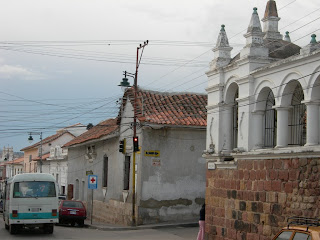I am reading apprenticeship contracts and they seem to vary little over the 18th century. Guardians are sometimes responsible for clothing but virtually all expenses from room and board to healthcare and even burial expenses are incurred by the master craftsmen. In one instance, in case the master watchmaker should die before the completion of the contract, the apprentice was to inherit the master´s tools. None of the documents mention anything related to the eventual acceptance of the apprentice into the respective guilds (gremios) but in one instance, the master guarantees the "graduate" apprentice´s work for five years.
Back to paleography. I'm hoping that a haircut and lunch will give me the patience, concentration and imagination to tackle the rest of the document. Paleography reminds me of the Sunday Times double crostic. Fragments of words, marks on paper which could go one way or another are juxtaposed against my Spanish vocabulary (which, I am happy to report, is pretty good) trying to build the most plausible narrative. It is slow going but reveals so much detail. My initial database, developed from the index summaries of the collection of 18th Century Escrituras Publicas enabled me to identify the documents that called for closer inspection. And that will be my work for the next month.



















 Santa Mónica
Santa Mónica

